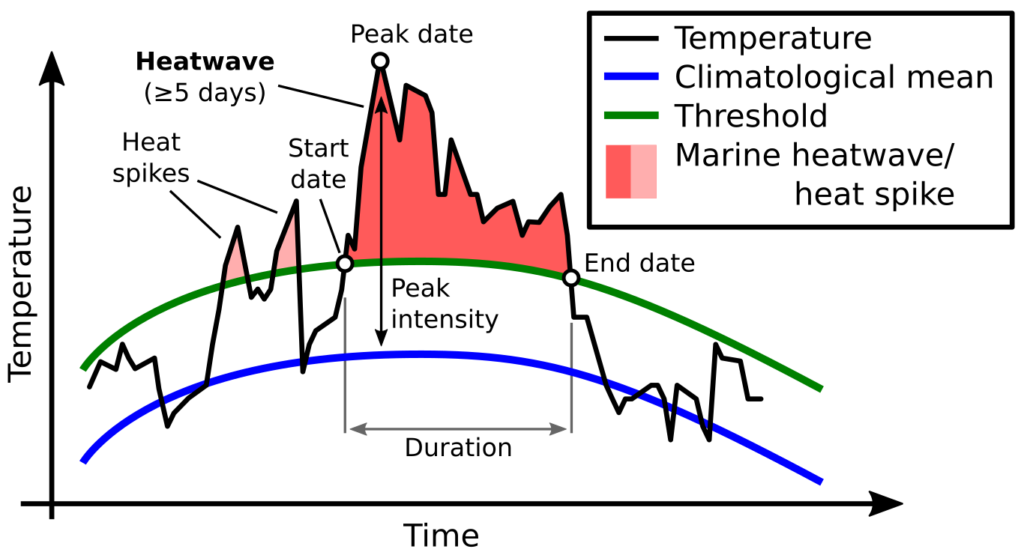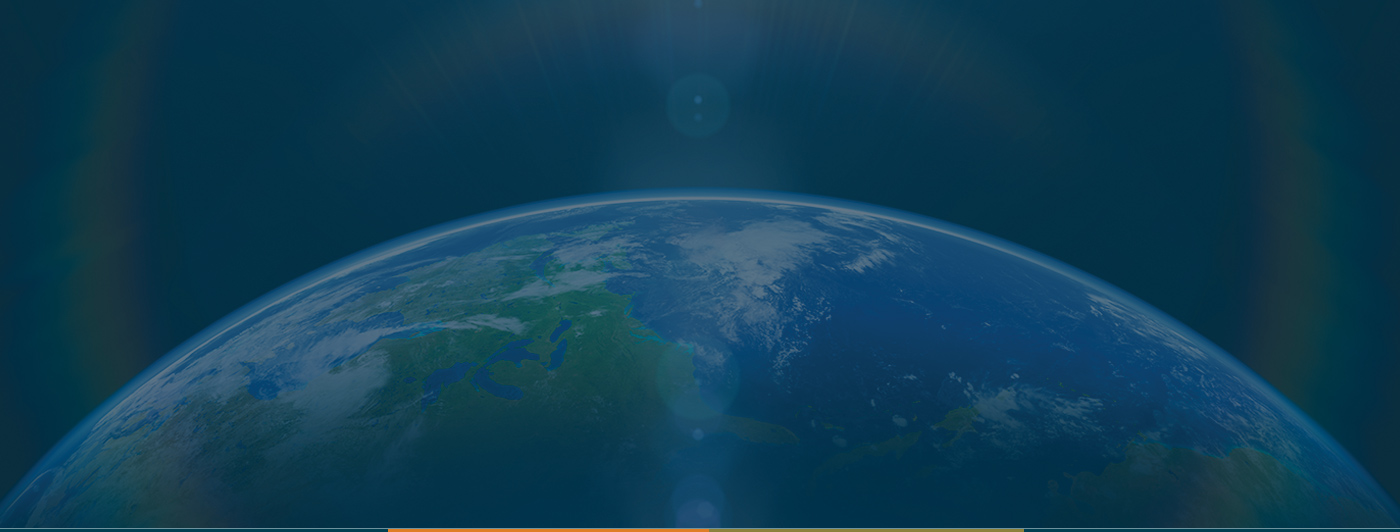Marine Heat Waves More Common and Lasting Longer Globally
A study done by the Marine Heatwaves International Working Group showed that there has been a 54% increase globally in the number of “marine heat wave days” per year since 1925.[1] Published in the Nature Communications journal and cited in News Deeply recently[2], the study cited the warm zone off the Western Australian coast in 2011 and the Gulf of Maine episode in 2012 as incidences of this trend. Average ocean temperatures have been increasing but these marine heat waves are also increasing in frequency and duration. The combination of the two are linked to factors that damage ecosystems and economies.

Figure 1 Graphic explanation of Marine Heat Waves, from http://www.marineheatwaves.org/all-about-mhws.html
Marine heat waves (MHWs) are “…prolonged periods of anomalously high sea surface temperatures… [that] have had severe impacts on marine ecosystems in recent years.” (Oliver et al., 2018). In Australia alone, Shark Bay in Western Australia lost 36% of its seagrass meadows and carbon storage, and the Great Barrier Reef suffered four mass coral bleaching events because of these extended periods of elevated sea surface temperatures.[3]
There are significant ecological and economic effects arising from these marine heat waves. They include:
“… sustained loss of kelp forests, coral bleaching, reduced surface chlorophyll levels due to increased surface layer stratification, mass mortality of marine invertebrates due to heat stress, rapid long-distance species’ range shifts and associated reshaping of community structure, fishery closures or quota changes and even intensified economic tensions between nations.” (Oliver et al., 2018)[4]
According to Eric Oliver, the study’s lead author, “…in the early 20th century, there was an average of two marine heat waves per year globally, but now there are three or four. While they used to last 10 days on average, they now last for an average of 13 or 14 days.”[5]
The study suggests that marine heat waves will continue to increase with the ongoing global warming.
Why does Wilderness Markets care about anemones and anemonefish? Because our work requires us to look not only at enterprises and fishery management, but at the entire ecosystem to properly account for business risks. Learn more about us.
[1] Oliver, E. C. J et al. (2018). Longer and more frequent marine heatwaves over the past century. Nature Communications, 9. doi: 10.1038/s41467-018-03732-9
[2] News Deeply. (2018). Executive Summary for April 13th. Oceans Deeply (Marine Heatwaves Are Longer, More Frequent). Retrieved from https://www.newsdeeply.com/oceans/executive-summaries/2018/04/13.
[3] McSweeney, R. (2018). Marine heatwaves have become ‘34% more likely’ over past century. Carbon Brief. Marine heatwaves have become ‘34% more likely’ over past century. Retrieved from https://www.carbonbrief.org/marine-heatwaves-have-become-34-more-likely-over-past-century.
[4] Oliver, E. C. J et al.
[5] Willick, F. (2018). Ocean heat waves becoming more common, longer, new study finds. CBC. Retrieved from http://www.cbc.ca/news/canada/nova-scotia/marine-heat-wave-ocean-hot-spot-study-1.4611794








